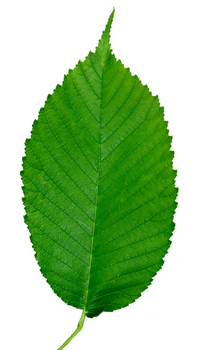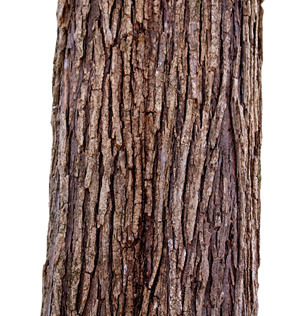Slippery Elm
Classification:
Family: Ulmaceae, elm family
Genus, species: Ulmus rubra
Leaves:
Base of leaf is asymmetrical. Edge of leaf is coarsely double-toothed. Leaf texture is very rough, like sandpaper. American elm leaves look similar but are not as rough.
Bark:
Bark is soft, spongy, often colonized by moss.
Flowers:
Flowers are short-stalked, arranged in clusters of 10 to 20, appear before leaves in spring.
Fruit:
Fruit is a thin and smooth papery wing, elliptical, contains one seed in center.
More Information:
The common name, "slippery elm," refers to the tree's slimy inner bark. The genus name Ulmus is from the Latin for "elm." The species name rubra is from the Latin for "red," referring to tree's reddish-brown heartwood.
Dutch elm disease: Elm trees are susceptible to infection by Dutch elm disease. The disease is caused by an ascomycete fungus and is spread by a beetle. The beetles carry the fungus from infected trees to healthy trees when they feed on twigs and branches. The beetles lay eggs in the bark. The beetle larvae hatch and form tunnels through the vascular tissue of the tree. The fungus then spreads through the tunnels. The trees respond to infection by plugging their vascular tissue. This prevents the tree from transporting water and nutrients from the roots to the rest of the tree, eventually killing the tree. The name “Dutch elm disease” refers to its identification in the 1920s in the Netherlands. The disease was first reported in the United States in 1928 and has spread throughout most of eastern North America.
Photos:

